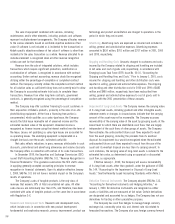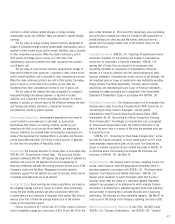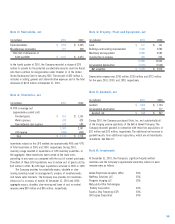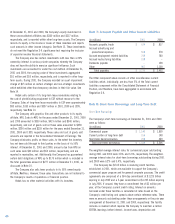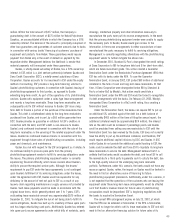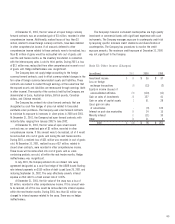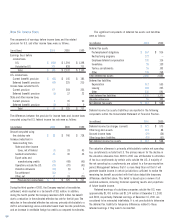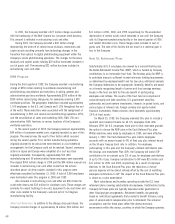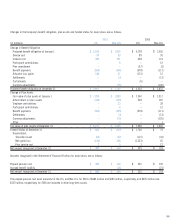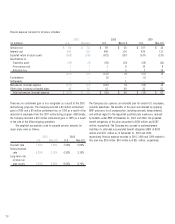Kodak 2001 Annual Report Download - page 67
Download and view the complete annual report
Please find page 67 of the 2001 Kodak annual report below. You can navigate through the pages in the report by either clicking on the pages listed below, or by using the keyword search tool below to find specific information within the annual report.
65
At December 31, 2001, the fair value of all open foreign currency
forward contracts was an unrealized gain of $1 million, recorded in other
comprehensive income. Additionally, realized losses of less than $1
million, related to closed foreign currency contracts, have been deferred
in other comprehensive income. If all amounts deferred to other
comprehensive income related to these contracts were to be realized, less
than $1 million of gains would be reclassified into cost of goods sold
over the next twelve months as the inventory transferred in connection
with the intercompany sales is sold to third parties. During 2001, a loss
of $13 million was reclassified from other comprehensive income to cost
of goods sold. Hedge ineffectiveness was insignificant.
The Company does not apply hedge accounting to the foreign
currency forward contracts used to offset currency-related changes in the
fair value of foreign currency denominated assets and liabilities. These
contracts are marked to market through earnings at the same time that
the exposed assets and liabilities are remeasured through earnings (both
in
o
ther income). The majority of the contracts held by the Company are
denominated in Euros, Australian dollars, British pounds, Canadian
dollars, and Chinese renminbi.
The Company has entered into silver forward contracts that are
designated as cash flow hedges of price risk related to forecasted
worldwide silver purchases. The Company used silver forward contracts
to minimize its exposure to increases in silver prices in 2000 and 2001.
At December 31, 2001, the Company had open forward contracts with
maturity dates ranging from January 2002 to June 2002.
At December 31, 2001, the fair value of open silver forward
contracts was an unrealized gain of $1 million, recorded in other
comprehensive income. If this amount were to be realized, all of it would
be reclassified into cost of goods sold during the next twelve months.
During 2001, a realized loss of $35 million was recorded in cost of goods
sold. At December 31, 2001, realized losses of $7 million, related to
closed silver contracts, were recorded in other comprehensive income.
These losses will be reclassified into cost of goods sold as silver-
containing products are sold, all within the next twelve months. Hedge
ineffectiveness was insignificant.
In July 2001, the Company entered into an interest rate swap
agreement designated as a cash flow hedge of the LIBOR-based floating-
rate interest payments on $150 million of debt issued June 26, 2001 and
maturing September 16, 2002. The swap effectively converts interest
expense on that debt to a fixed annual rate of 4.06%.
At December 31, 2001, the fair value of the swap was a loss of
$2 million, recorded in other comprehensive income. If this amount were
to be realized, all of this loss would be reclassified into interest expense
within the next twelve months. During 2001, less than $1 million was
charged to interest expense related to the swap. There was no hedge
ineffectiveness.
The Company’s financial instrument counterparties are high-quality
investment or commercial banks with significant experience with such
instruments. The Company manages exposure to counterparty credit risk
by requiring specific minimum credit standards and diversification of
counterparties. The Company has procedures to monitor the credit
exposure amounts. The maximum credit exposure at December 31, 2000
was not significant to the Company.
Note 12: Other Income (Charges)
(in millions) 2001 2000 1999
Investment income $15 $36 $37
Loss on foreign
exchange transactions (9) (13) (2)
Equity in income (losses) of
unconsolidated affiliates (79) (110) (11)
Gain on sales of investments 18 127 41
Gain on sales of capital assets 351 28
(Loss) gain on sales
of subsidiaries –(9) 120
Interest on past-due receivables 10 14 15
Minority interest 11 (11) 30
Other 13 11 3
Total $(18) $96 $261



